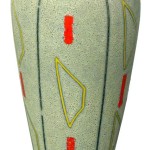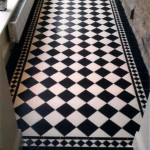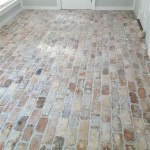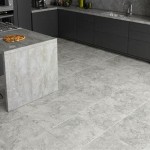Images Of Painted Basement Floors: A Comprehensive Guide
Painted basement floors are a cost-effective and aesthetically pleasing alternative to traditional basement flooring options such as carpet, tile, or laminate. Exploring images of painted basement floors demonstrates the versatility and potential of this flooring solution. The visual resources illustrate the range of color choices, patterns, and finishes achievable through painting, offering homeowners a starting point for their own basement renovations.
The primary benefits of painting a basement floor include cost-effectiveness, ease of application, and resistance to moisture. Compared to installing traditional flooring, painting requires less material and labor costs. The application process is relatively straightforward, making it a viable DIY project for many homeowners. Properly applied paint creates a sealed surface that is resistant to moisture, a common issue in basements.
However, it is essential to acknowledge potential drawbacks. Painted floors can be prone to chipping, scratching, and peeling, particularly in high-traffic areas or without proper preparation. The longevity of a painted floor depends significantly on the quality of the paint used, the thoroughness of the surface preparation, and the amount of foot traffic it endures.
Understanding the Types of Paint for Basement Floors
Selecting the appropriate type of paint is crucial for achieving a durable and aesthetically pleasing finish on a basement floor. Two primary types of paint are commonly utilized: epoxy paint and acrylic latex paint specifically formulated for concrete floors. Each type offers distinct advantages and disadvantages.
Epoxy paint is generally considered the more durable option. It forms a hard, protective layer that is highly resistant to abrasion, chemicals, and moisture. Epoxy paint is available in both one-part and two-part formulations. Two-part epoxy paint requires mixing a resin and a hardener, resulting in a stronger and more resilient finish. However, it typically requires more meticulous preparation and application.
Acrylic latex paint formulated for concrete floors is a more user-friendly option. It is easier to apply and typically less expensive than epoxy paint. While not as durable as epoxy, high-quality acrylic latex paint can still provide adequate protection for basements with moderate foot traffic. Look for paints specifically labeled for use on concrete floors, as these formulations contain additives that improve adhesion and resistance to alkali, which is present in concrete.
Beyond these two primary types, specialized concrete stains and sealers can also be used to enhance the appearance and protect a painted or unpainted basement floor. Concrete stains penetrate the surface of the concrete, creating a permanent color that will not chip or peel. Sealers are applied over paint or stain to provide an additional layer of protection against moisture and abrasion.
Preparation is Key: Ensuring a Long-Lasting Finish
Proper surface preparation is arguably the most critical step in achieving a long-lasting and aesthetically pleasing painted basement floor. Thorough preparation ensures that the paint adheres properly to the concrete, preventing premature chipping, peeling, and blistering. Neglecting this step will invariably lead to disappointment and the need for re-application.
The first step is to thoroughly clean the concrete floor. Remove any loose debris, dust, and dirt using a broom and vacuum cleaner. Any existing stains, such as oil or grease, must be addressed with a degreaser specifically formulated for concrete. Follow the manufacturer's instructions carefully when using degreasers and ensure proper ventilation.
Next, inspect the floor for cracks and repairs. Small cracks can be filled with a concrete patching compound. Larger cracks may require more extensive repair work. Allow the patching compound to dry and cure completely before proceeding. Once the repairs are complete, the floor should be etched to improve paint adhesion.
Etching involves applying a mild acid solution to the concrete surface. This process opens up the pores of the concrete, creating a rougher surface to which the paint can bond more effectively. Muriatic acid is commonly used for etching, but be sure to wear appropriate protective gear, including gloves, eye protection, and a respirator, to avoid skin and respiratory irritation. Alternatively, commercial concrete etching products are available.
After etching, thoroughly rinse the floor with water to remove all traces of acid. Allow the floor to dry completely before applying any paint. This may take several days, depending on the humidity and temperature. A moisture meter can be used to verify that the concrete is sufficiently dry before painting.
Application Techniques and Design Considerations
Once the floor is properly prepared, applying the paint involves several key techniques. The use of appropriate tools and careful attention to detail can significantly impact the final result. Moreover, consideration of design elements, such as color, patterns, and accents, can transform a utilitarian basement floor into a visually appealing space.
Begin by applying a primer specifically designed for concrete floors. Primer enhances adhesion and provides a uniform surface for the paint. Apply the primer evenly using a roller or brush, following the manufacturer's instructions regarding drying time.
Next, apply the first coat of paint. Use a roller with a nap appropriate for rough surfaces. Apply the paint in thin, even coats, avoiding drips and puddles. Allow the first coat to dry completely before applying the second coat. Two coats of paint are generally recommended for optimal coverage and durability.
When selecting a color, consider the overall design scheme of the basement. Lighter colors can brighten up a dark basement, while darker colors can create a more dramatic effect. Neutral colors, such as gray or beige, are versatile and can complement a variety of décor styles. Avoid using very glossy paints, as they can be slippery when wet. Semi-gloss or matte finishes are generally preferred for basement floors.
Patterns and designs can be incorporated into a painted basement floor to add visual interest. Stencils can be used to create intricate designs, such as geometric patterns or floral motifs. Faux finishes, such as marbling or wood grain, can also be achieved with paint. Taping off sections of the floor allows for the creation of stripes or checkerboard patterns.
Adding a clear sealer after the paint has dried can provide an extra layer of protection against scratches and stains. Apply the sealer evenly using a roller or brush, following the manufacturer's instructions. Allow the sealer to dry completely before using the floor.
Remember that painted basement floors, while aesthetically pleasing and cost-effective, require ongoing maintenance. Regular cleaning with a mild detergent and water will help to keep the floor looking its best. Avoid using harsh chemicals or abrasive cleaners, as these can damage the paint. Promptly clean up any spills to prevent staining.
By carefully selecting the appropriate paint, thoroughly preparing the surface, and employing proper application techniques, homeowners can transform their basement floors into durable, attractive, and functional spaces. The images of painted basement floors available online serve as a rich source of inspiration, demonstrating the myriad possibilities for this versatile flooring solution. The key to a successful outcome lies in meticulous planning, diligent execution, and a commitment to ongoing maintenance.

House And Home Stead Basement Floors Painting Makeover Remodeling

Diy Painted Basement Concrete Floor In The House Of David

How To Paint A Concrete Floor Southern Hospitality

7 Ingenious Painted Flooring Ideas For An Unfinished Basement

30 Perfect Basement Concrete Floor Paint Color Ideas Painting Floors Flooring Options

Types Of Paints And Stains For Concrete Floors The Home

How To Paint A Concrete Floor In Basement Twofeetfirst

13 Practical Tiips For A Painted Vinyl Basement Floor

Undisgusting Painted Basement Floor

Painted Concrete Floors Vintage Revivals







